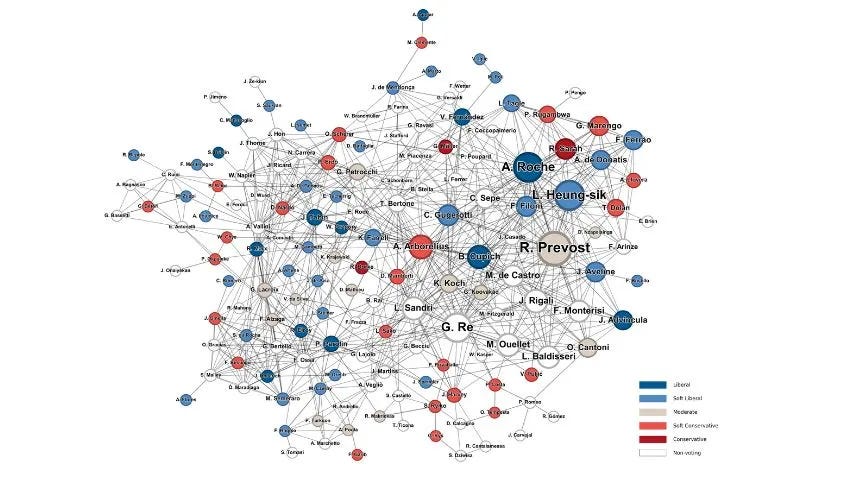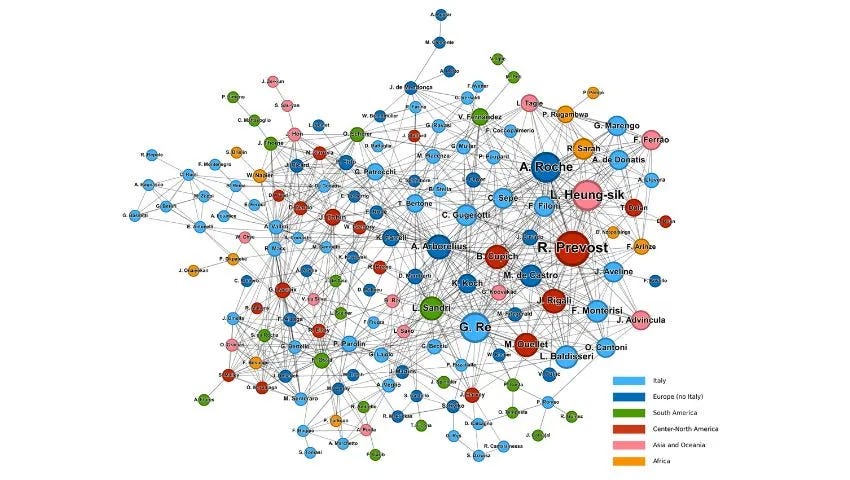53. Pope and Product-Market Fit
Estimated reading time: 1 minute

A study conducted by Bocconi University researchers Giuseppe Soda, Alessandro Iorio, and Leonardo Rizzo on how relationships influence who gets elected as the next Pope was published on May 8, 2025—the same day the new pope was announced. The study was quite accurate in identifying Robert Prevost as the frontrunner.
The study used network science—the same kind used to analyze social media to map out who knows who, who influences who, and who connects different groups within the College of Cardinals.
They built this network using:
Official roles: Which cardinals work together in the Vatican
Ordination history: who ordained whom, showing spiritual loyalty lines
Informal ties: mentorships, shared ideologies, and media-reported alliances
From this, they created a 3-part score for each cardinal:
Status: How connected they are to powerful cardinals
Information Control: How much do they act as a bridge between groups
Coalition Building: How well they can gather support and unify factions
They also factored in age since popes are usually elected within a specific age range. As seen below, in their network maps, Pope Prevost scored highest in all these dimensions.
The underlying idea is that social networks can predict influence. For start-ups, growth often happens when the product catches on with the user’s social network. Influential nodes amplify growth, which can further improve a product’s use. A virtuous cycle is born. For example, the peer-to-peer payments introduced by Monzo Bank, which used your mobile phone's contact list, worked better as more friends joined.
This is called the Network effect and is different from virality. As Tom Blomfield explains here,
“viral mechanic” normally uses the existing customer base to spread the product to friends. Network effect is “the product itself actually improves as more of your network joins. Whatsapp and Skype are great examples. The more of your friends who join, the more people you can communicate with”.Figma is a classic case study for this. As Kwokchain writes in his newsletter -
“Once Figma is adopted by a few designers, all their colleagues across departments get exposed to the product and especially its collaborative features and see how much better the experience is for them. They then encourage its usage and adoption across their other teams and projects and so on.’’If you are building a product, consider how to help your early adopters share their usage and benefits with their network and how the increased usage can improve the product. When each new user makes the product more valuable for the next, you’re not just growing but compounding.



